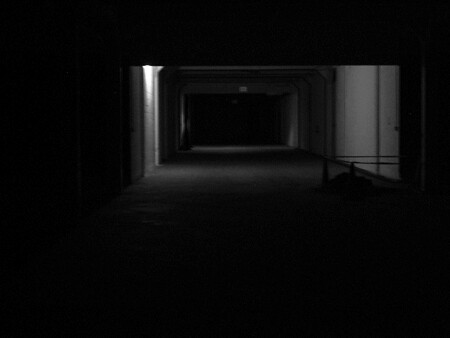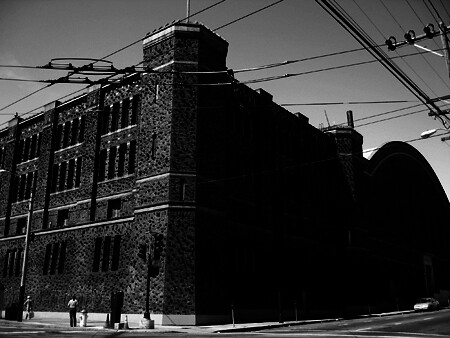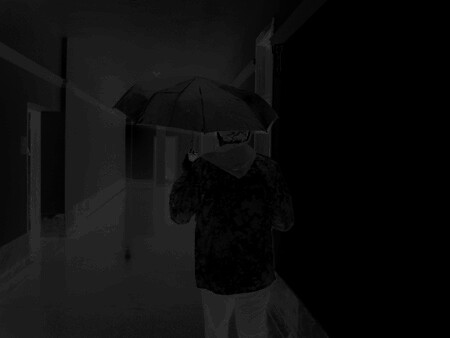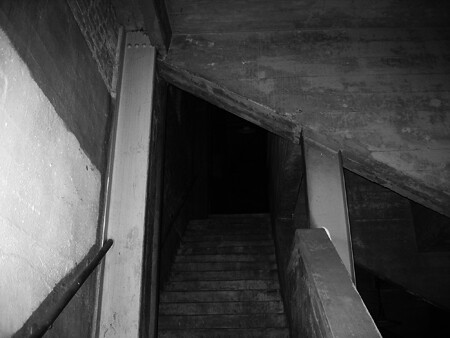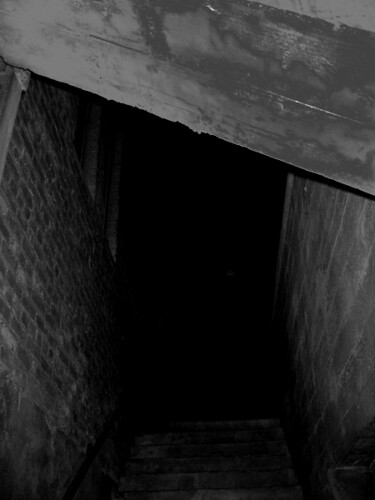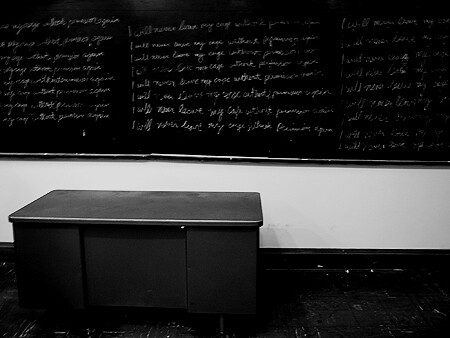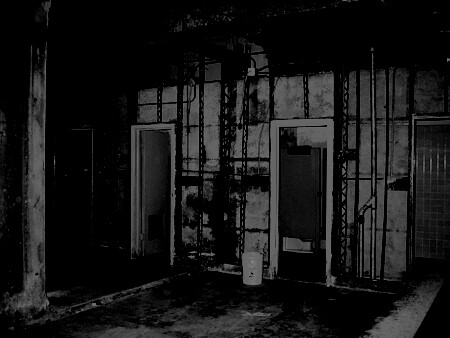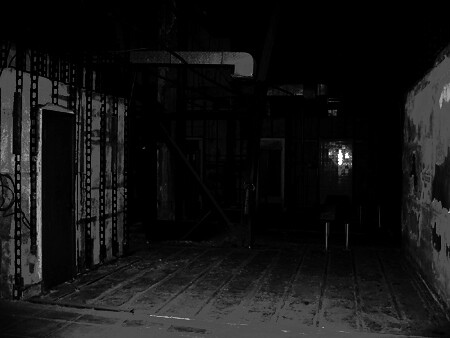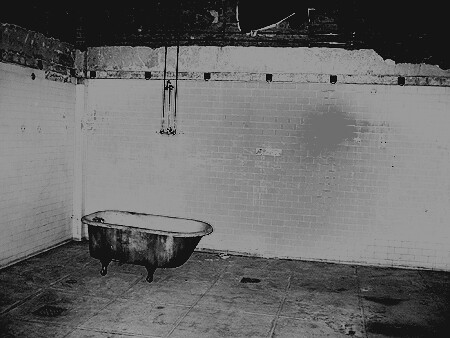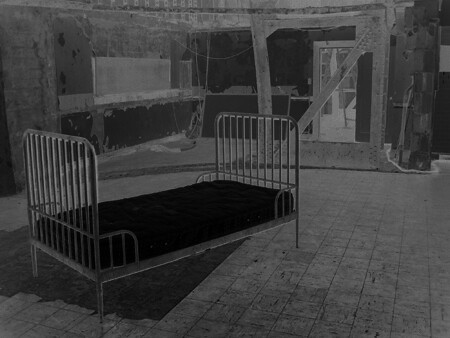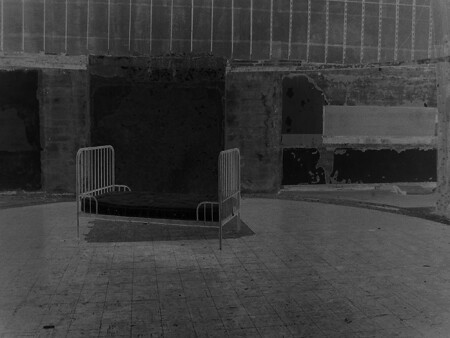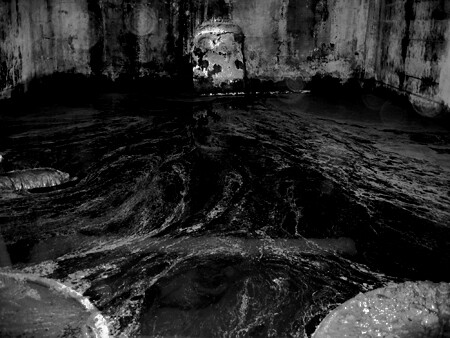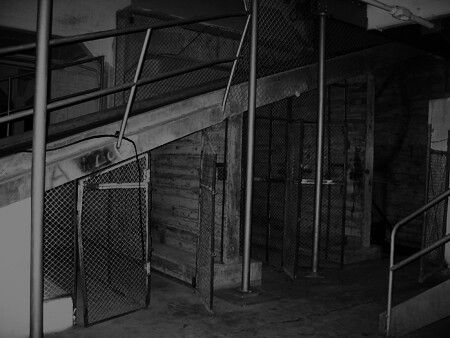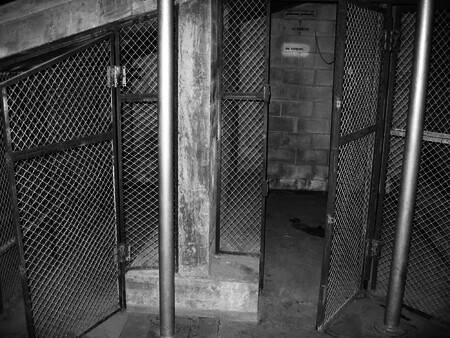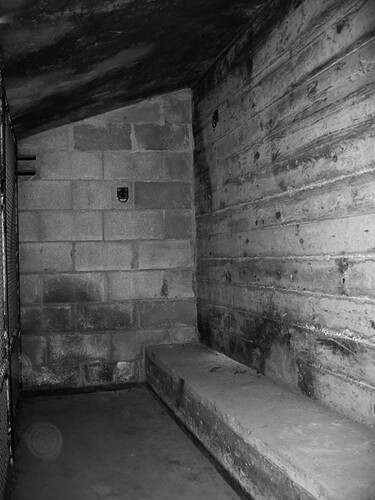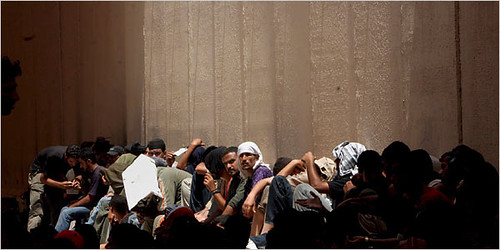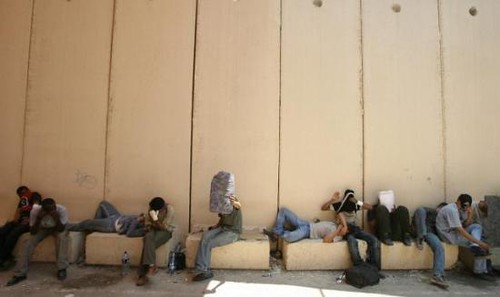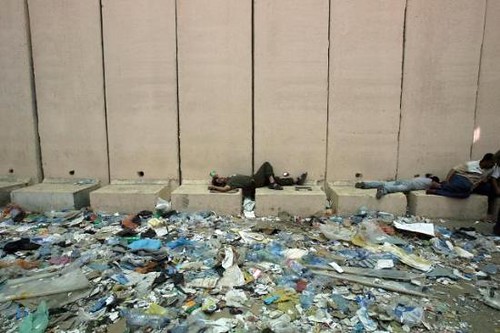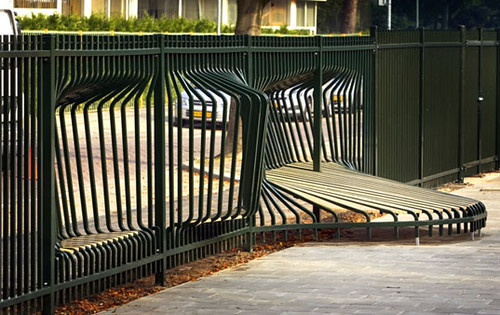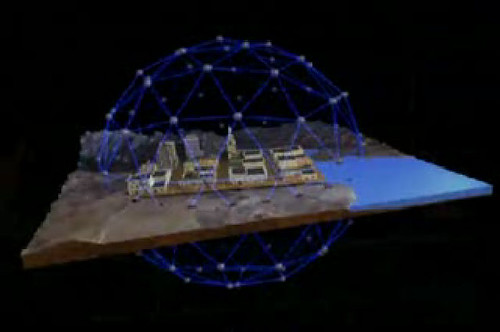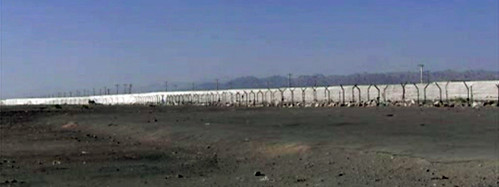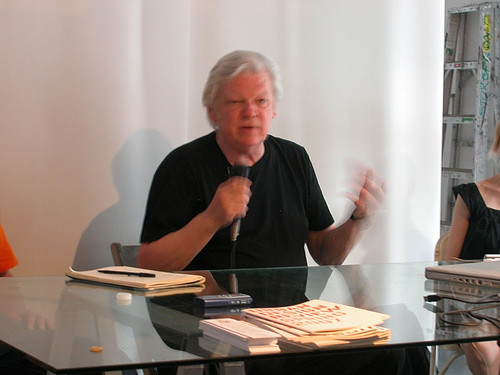
It was Thursday, May 31st, sometime after 5:30 PM, essentially, midway through
Postopolis! High-noon for our 5-day event, so to speak. All the swivel panels of the Storefront’s façade were wide open and people gathered around the sidewalk to peer through them. It was hot, sticky, the gallery’s dank industrial textures were flaking off, and inside gathered a flock of curiosity with lights and cameras aimed and ready to fire. A supple breeze spread a petrol-infused veil across the air while a stream of delivery trucks groaned over the potholes of Kenmare St. rattling the space’s foundation to its core – almost like some nuanced stream of mini-earthquakes that proceeded his looming wake. In a matter of minutes a bluish pre-twilight tint set the tone inside our SoHo bunker. The gallery reached a buzz it had not until that point – it was at last in full effect.
With chit-chat percolating over the last minute movements of a squirmy gallery scene, he suddenly appeared.
Lebbeus Woods, a gregarious man with a deliberate soul to match, stuck out his big old paw and introduced himself. I shook his hand and thought (in one of those absurd little parentheticals that you have about people when first meeting them) that was the hand that held the pencil, probably as light as a bird you wouldn’t want to hurt nor let escape; that was the hand singularly responsible for drawing some of the most incredible renderings I, and a whole generation, had ever seen. Geoff and I smiled and cracked up together seeming to share this thought. Lebbeus is, after all, an architectural legend who has pushed the medium of drawing into the collective imagination perhaps like very few other people have done, that will surely leave an imprint there forever. If drawings could express the ethereal conceptual nature or complex political dimensions of architecture, or, could somehow depict the vast morphologic mystery of the earth’s chaotic crust, then Lebbeus’s work has no doubt achieved an epic, cultish even, stature in its own sheer visual right in this regard.
What follows is a rough transcript of a panel talk between
Geoff,
Dan,
Jill, Lebbeus, and myself at the apex of Postopolis! Nervous, fidgety, anxious to see where it would lead, the four of us were suddenly sitting there passing back and forth a microphone beside the man himself, hurling question after question at him, for which, I must say, he fielded in the coolest of manners.
• • •

Geoff Manaugh: One of the reasons I'm such a fan of your work is because of its ongoing theme of the
earthquake, or of terrestrial instability – the idea that the terrestrial referent kind of disappears. Sometimes there might be a building that's not even on the Earth's surface – like Einstein's Tomb – or, there's a kind of a post-earth condition to the architectural structures that you design and in various scenarios that you set up. So I'm wondering if you could discuss that in more detail, and what attracts you to that. How can an architectural structure account for an unstable terrestrial foundation?
Lebbeus Woods: I suppose that my life has been unstable. I was a military brat. I grew up in different places around the U.S.A., always moving from one place to the next. Seriously, that kind of autobiography figures into these things one way or another. But also, I was born in 1940, already in the 21st century, and over those years there’s been tremendous kinds of changes, particularly socially, culturally, and intellectually. I’ve been a witness to all these kinds of changes so there’s a big instability that we have to deal with in our culture. In a sense, the earthquake, or the war are just the most obvious manifestation of it, right? So I think my interest in dealing with instability is an interest in dealing with our condition, our human condition at the present time. I could go on, but we don’t have all that much time so –
Bryan Finoki: My question is, well – I’m sort of interested in your thoughts on the evolution of the political nature of architecture and the political production of space. And I’m wondering, if we’ve come a long way from – or if we’ve come full circle – say, from the times of the Roman Empire and the early inventions of the frontier and notions of borders, to a point now where we are armoring our skyscrapers, and border fences have become a new kind of urban phenomenon. We’ve got these full on detention islands and, so, how – I mean, your book
War and Architecture was really interesting, but maybe moving on from those thoughts – I’m wondering, if there’s a different sort of political nature of architecture today, given the ‘War On Terror.’ How would you relate the ‘War On Terror’ and architecture, and how has it shifted the nature of space today?
 LW
LW: Well I think architecture as we think of it as a profession and as a practice isn’t very far from the Roman Empire. Still the main thing is to build these monumental buildings, which are kind of valorizing of the hierarchy of power, authority and society. Even if it’s a museum it’s about the elite’s ability to gather works of art and put them in a very special building – maybe a work of art itself. So, I think we are still in that moment, or mentality. Look at the architecture magazines, and so on. That’s the way people think, that’s the way architects think. Not all architects, though.
Fortunately one of the reasons I am out here today are these blogs – your blogs in particular – but, generally, the internet is a place for some other view of architecture to emerge, and therefore it becomes incredibly important. You mentioned security for buildings, or for neighborhoods, gated communities and the rest. Yeah, this is part of the defensive posture architects are forced to enter in to. Rather than having a kind of open and outward moving posture it is about how can we secure these enclaves of power and of wealth. And that’s their job – to beautify it and make it look good, and that making it look good is a major preoccupation.
Dan Hill: This idea of instability or unpredictability and returning to that from a craft perspective, almost, and looking at the professional architecture you describe, we actually have had a lot of talks over the days about the notion of the master builder really dissipating, and architects effectively having to become managers across multiple disciplines, so they're not experts anymore, y'know, they're not acoustic engineers; we have acoustic engineers to do that kind of thing. I am wondering if there is some relationship – I was reading a lecture that you gave about rod-and-cable constructions in Vienna and Paris – you almost created a set of guidelines or rules for constructing things, but you haven't given the details of the implementation. And in a way you're letting the implementation being decided by the people on site, presumably, who may not be architects at all. Does this enable this instability to be configured on site in some way?"
LW: Well that’s the idea. In other words, I think the role of architecture – not all of it, because we’re still going to have the monuments, the big expensive buildings, that’s just the way it’s going to be – but, if there’s going to be another movement, another direction in architecture, it has to engage people differently. Other than saying,
here, look at this, isn’t this amazing? It has to interactively involve them other than as spectators, or, as a ‘society of the spectacle.’ It has to engage them as creators.
Now, see, I lived through the sixties when there was a great interest in empowering people in lower economic class communities, right? They were in very bad conditions and architects said, you know,
well, let’s go in there and help them improve their conditions. So they went in – it’s called “design advocacy.” I don’t know, you are all so young, and you probably don’t even remember the term, but there were lots of things written in the sixties and early seventies –
design advocacy. So, the architect became the advocate of the people in the community. And they’d rent a room, put out a table, a big table – or a lot of tables – then, they’d have meetings with the people in the community with anyone who’d want to come and join us. And provide tracing paper and pens, and help them express their architectural ideas with other people about the community. It was a noble effort but it was a total failure. Why? Because the people in the community couldn’t think in terms of designing. They weren’t educated for that, they just weren’t prepared. So, nothing much ever became of it. There were a few little brick houses that were built, whatever, but it didn’t come out as a
real movement in architecture.
Okay, I don’t want to go on too much about this but just to say – my idea is that, 1) you have to engage people, but you also have to give them the tools to work with. You say,
the rules of the game. Yeah, you have to give them the rules of the game, like when you play Poker you have to give them the rules of Poker. You can’t just start throwing cards around. So, you give them the basic rules of the game, then you give them some basic techniques:
this is how you move this here, and
this is how you move that there. You don’t say where you are going to move it. And then, if you’re really starting at a rudimentary level you show them some examples. You say, now it
could look like
this, or it
could look like
that, if you follow these rules.
So, this way you are giving people a leg up in the story. And some of the projects I have done in the last four or five years, particularly – although it also traces back to some of the work I did in
Sarajevo during the siege of the city in the nineties – these are the things I have been putting out there. Now, whether they will be any better than the
design advocacy from the sixties, I don’t know. It hasn’t really gained that kind of momentum, yet. But, being an American I believe people have to
choose to do it. I don’t think this is something that should be imposed from the top down. They have to want to do it this way. They have to want to participate.
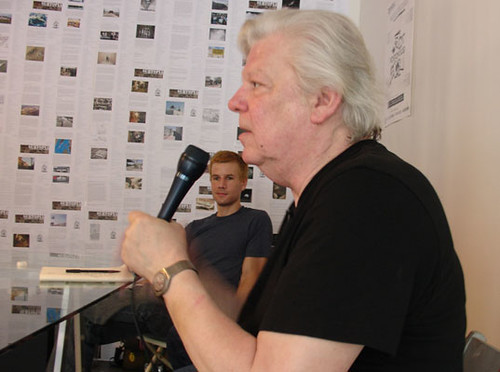 GM
GM: You have a huge following outside of architecture, in fields like set design, film, and even in comic books. Your work seems to pop up everywhere, throughout the arts, and so I'm wondering if you could address what you see as the appeal of your work. Also, with students you've worked with, and with certain publications you've helped mentor into existence, there are ideas that go beyond architecture – they set up entire situations or scenarios. Things like Arctic research stations, or moving machine cities. All of this seems to capture the imagination of people outside of architecture. So, could you talk about how your own work has that appeal? Especially if there's someone here in the audience who's an architect but who wants to attract a different kind of audience.
LW: Well, I’ll say, first of all, if what you say is true, and I believe to some extent it is, I’m thrilled. I’m thrilled, you know. Although, the irony is, I’ve always addressed my work to architects. I’ve never addressed my work to, you know, to people in the arts or to others, it’s always the architects that I wanted to talk to and say – what can architecture be, let’s look at it and ask, what can it be? And to me, that responsibility is primarily in the hands of architects. There are the ones who say,
that’s what I want to do. So, they kind of assume the mantel of responsibility for the field of architects. So, I’ve always talked to architects primarily. It’s kind of ironic that others would pick it up. I’m happy because maybe many of the architects are asleep. [There is a chuckle from the audience.] Maybe, they don’t care. If others do, I’m thrilled. I think I generally approach architecture, in a sense, from a broad way – kind of philosophically, on one side looking at ethics, questions of politics and so on. My whole interest in cybernetics dates back to the late fifties, early sixties. Am I alone with that? So, that’s one side.
The other side is always a visceral kind of gut-feeling that has to work with a visual communication. Because that’s where most of the information in the world goes in, though our eyes – we’re lucky enough to have vision, you know? It has to communicate visually. So, I was working from the philosophical side and the visual side and I try to put those together. I’m still trying to do that. It’s not that I don’t fulfill my own ideal of doing that, far from it. But, if many people can take this into a product realm and get a certain spirit from it, I’m amazed and delighted, if that’s the case.
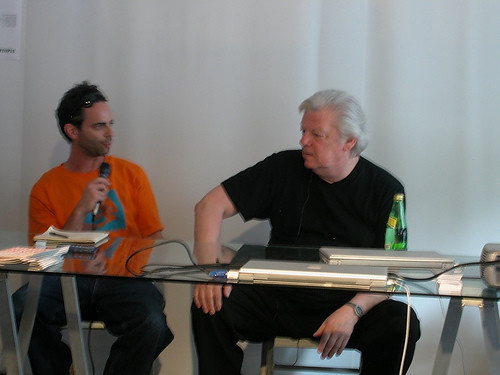 BF
BF: My next question is kind of about drawing. Actually, one of my favorite pieces of yours is not a drawing at all. It was in Michael Sorkin’s book
Against the Wall, which is about the spatial dimensions of the Israeli/Arab conflict. At the very end of the book you propose a border wall game –
The Wall Game, I think is was you called it, which I thought was fascinating. [At this point, Lebbeus turns around to me curling his fingers with an A-Okay gesture of approval. We smile, clearly, he is happy I brought this project up.] For those of you that don’t know this piece, or haven’t read it, it’s about this structure, this border wall structure – the security wall that divides the Arabs and Israelis, in fact – that mediates this mutually-created game between them. It sort of demands that one side take away a piece of the wall while on the next turn the other side adds a new piece to it. Simultaneously,
adding to and
taking away from this border wall as a metaphor for how they are both responsible for constituting and keeping the structure in place, at the same time avoiding this fearful feeling that the wall could at any moment collapse. Taking turns back and forth, putting pieces in and taking them out. It’s a massive balancing act that conjures the thought: what would happen if it did come crashing down? There’s a sense of fear that props this fence up.
So, I’m wondering, a) if you ever did any drawings for that, because, of course, if so I’d love to see them, and, b) if you start with a very definitive context and then go to the drawings and come up with an idea? Or, to what degree you just start drawing and let the context kind of emerge out of that?
LW: Well, it’s kind of a unique piece of work in my body of work over the years. It came about in a really unique way. You’re going to have
Michael Sorkin here tomorrow, right? [We quickly explain to him that Sorkin will not be able to join us.] Well, okay. Anyway, I was talking to Michael Sorkin some years ago and he said, I’m going to do this book called
Against The Wall with Israeli and Palestinian architects, or, more so, critics and writers. And I said I really wanted to do something with that idea. He said
great, great, do it. So, time went by and as I was thinking – I mean, myself, I was completely against the wall – that it was very hard for me, because I felt that anything I did was going to endorse the wall. You know, if I want to put a mural on the wall, or, I want to transform it into housing, almost any other idea is going to actually justify the existence of the wall in some way. So, finally, I realized that the wall had to come down. In thinking about it I imagined it could be an act of creation – a creative act, in the sense of bringing it down creatively, involving both sides somehow, because it is a two-sided conflict. And the idea of a game arose – because we all know it’s just a big game. All of this is just a very serious game. And if it’s just a game in the end we have to understand the rules.
So, I set up the rules in the book. And there are drawings – some very rudimentary drawings, though. Much in the spirit I described a moment ago when I said that I wanted to show some examples to demonstrate rules. And, well, I haven’t gone back to the Israelis or the Palestinians to find out whether or not they want to play this game – they’ve got other things on their minds over there, let’s face it.
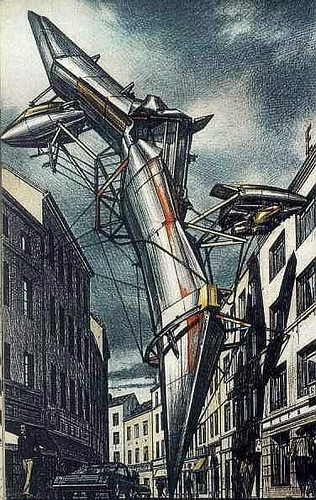 DH
DH: You talk about communicating visually, and your drawings are extraordinary, quite impressionistic, which reinforces what you've been saying about your approach (to open-endedness) ... I just got through reading Junichiro Tanizaki's
In Praise of Shadows and Juhani Pallasmaa's book
The Eyes of the Skin, which is about the senses and how architects deal with other senses, not just sight. And about the dominance of sight within Western architecture ... I wonder, if this, this dominance, devalues for us, smell, sound, taste and so on ... movement, shadows, etc., I wonder, if you've ever explored working with other media for conveying your work other than visually, through drawing. Any involvement in sound or with sound pieces themselves? Or, films and so on?
LW: Not exactly. In the last two or three years I’ve been involved with a few installations. In 2002 in Paris, there was one installation where there was a strong sound component. But you’re absolutely right, though, it’s not my thing. I just haven’t gone there really. Actually, just recently, I thought, maybe I should go back to the idea of making film – a movie. In 1990 when I was working on this film
Alien 3, the director called me and asked me to do it, so, I agreed and I worked on it for a few weeks in L.A. and London. And it was an education. He told me at the time, you don’t want to be a designer working in the movie industry, because you are the lowest of the low. And they just take what you do, and they just toss it usually, or, they just change it into something unrecognizable.
You know, architects complain that clients don’t appreciate their work. Movie studios and directors and producers and studio executives could care less about that stuff. So, I did have the fantasy of making a big budget Hollywood movie. I actually wrote a screenplay. I got the famous book by Sid Field, uh…
the famous book on screenwriting, I can’t think of the title right now, but a famous How-to based on
Robert Towne’s
Chinatown, and wrote a script. Anyway, I wrote a screenplay based on my
Underground Berlin project, which I did in 1988. The movie is called
Underground Berlin. And I, actually (because I made a few contacts in Hollywood at the time), sent the screenplay out to one lawyer/producer friend of mine. He showed it around and said, well, you know, people thinks it’s got some possibility, but it’s going to need a few changes.
In Hollywood you don’t produce a product, you create a process – it’s always about process. So, a screenplay is a process; a film is a process. You can’t look at it as an art. Anyway, these are very intriguing mediums because for me the drawings are about ideas only. They’re not about drawing. I mean if they were about drawing I’d get very bored. It’s about communicating ideas – it’s about finding ideas. Use the drawing to find an idea, and then develop it. You can use the movie in the same way. It can be an incredible medium. If it’s a decent movie we can see how the visual dominates cinema, and whether it presents us with a good vision of the world, or, something to say about this world. But, by and large it’s formulaic. Like buildings, they’re all about the same thing.
GM: You say that all of your work, or most of your work, is directed at architects, but I'm wondering where you turn to when it comes to finding inspiration – when you're looking for a new idea, if you look at architecture but also comic books, films, novels, built spaces, etc. In the process of answering that, I'd like you to address how you incorporate these things into your work as a teacher. I'm interested in how you impart knowledge to a new generation, or to one of your students, and how the educational process works for you.
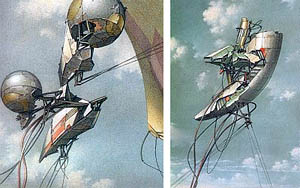 LW
LW: Okay, there’s two parts. The first part, I can’t honestly say where the inspiration for my work came from. I think it came from reading. It came from texts, from Nietzsche, Schopenhauer, it came from, you know, Jean-Paul Sartre. These are the ideas that got me worked up and inspired. It wasn’t so much the visual things that inspired me. Although, of course, there were plenty of painters in history that I admired all the way from Brueghel to Goya, to Picasso – because everything visual stimulates me. So, there’s so much stimulation there that I can’t point to any one thing being a sort of origin. I mean – texts and writing, points of view, ways of looking at the world – this is what I found along the way, I think, and, ultimately what decided what I chose to do.
Now as far as education, you know, teachers are sometimes the prisoners of their school. But I’ve been very lucky, I’ve taught at Cooper Union for, well, going on twenty years, off and on – mostly on. And I have had two deans that I’ve worked with both down here, John Hejduk and now Anthony Vidler, who have more or less given me my latitude. I’ve taken the opportunity to try and work with students the way I would work with any people. I mean students are just people, aren’t they? [We all laugh at the simple truth of this, and perhaps the refreshing tone of such a statement.] I think. And, I almost hate the term
student, alright? But, I understand that it has a particular meaning. So, if I were working with a group of people who are making an installation project I would work with them exactly the same way I’d work with the students. So, I set out a question, lay out some rules, and we get to work and develop modes of answering the question. I believe the most important thing a teacher does is ask the right question. If the teacher asks the wrong question, or a question that everyone already knows the answer to, then you can’t learn anything. You have to ask questions that you don’t even know the answer to yourself, and together you work towards it. To me that’s education.
BF: And I think that’s the essence of architecture, too. It has to ask questions, pose challenges – it has to be willing to push through experimentation rather than always just be willing to fall in line and do what we’re told – of being a practitioner, or merely providing a service. I’m also curious what you are working on today, what sorts of things excites you at the moment? What projects have you got cooking, or, where will you set your sights next? Or, what may be your future plans for
the institute, or, even, what your plans are right now? Could you talk about that?
LW: Well, that’s hard. I’ve always worked, more or less – except in certain moments – alone. I’ve got an office. I have collaborators from time to time that I work very closely with. Basically, I sit down, usually sitting – although, recently I’ve been doing some pretty large drawings where I have to stand up on a ladder – but, I basically work alone. I spend a lot of time thinking. Not necessarily doing anything. I don’t feel like I have to do some product necessarily. I think a lot. I read. I draw. And the ideas that interest me now, I don’t know – there are several.
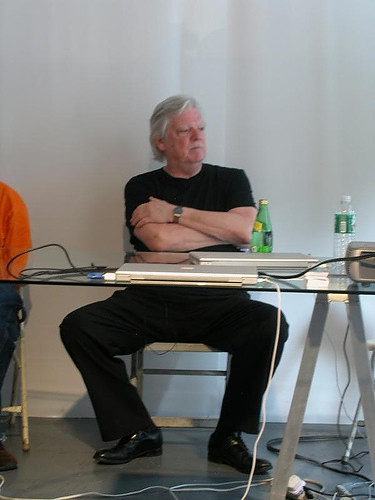
I’ve always been interested, I think – if you look back at my work from the beginning, really – I’ve always been interested in the idea of the artificial landscape. Reforming the landscape. Architecture being a method of reforming the earth’s surface. We reshape the earth’s surface, from architecture to paving streets, to parking lots and buildings that are really reforming the surface of the earth. Reforming nature, taking over what we find. And we’re mushing it around and remaking a new earth – or, what we used to call
Terra Nova. So, that’s what I’m thinking about, that’s what I’m still doing. Still making drawings in that direction. Less and less they’ve become populated by any kind of buildings. I haven’t worked on any building-like structures for quite a while.

There was a project in Vienna in 2005, it’s called “
System Wien” – I happen to have my collaborator here,
Christoph Kumpusch – and we’re really investigating architecture as energy, as the accumulation of energy, as the materialization of energy, and try to look at architecture and the making of space that way rather than enclosure, and so forth. So, we don’t look at the vectors and shifting vectors, contours, limitless boundaries of space. It’s an investigation that I am still carrying on today, primarily in drawing and some writing.
Now, socially, there is a dimension to that, and something I think we are all going to have to deal with, eventually. And architects better start dealing with it – that is the notion of slums. You know, Mike Davis wrote
an amazing book and he kind of called everyone’s attention to it but, they’re out there, and we’ve all been aware of them. I was certainly aware when I went to Brazil in 1987 and saw the favelas in São Paulo, Brazil. I was shocked and even wrote about it in one of my earlier books, but this is nothing new. It’s just that I’m beginning to feel I better start while I’ve still got life left in me – that I better start turning some of my attention to this critical problem. Because it’s really an architectural problem.
The main thing is that the living environment is desperate – the living environment is awful. It’s oppressive, and that’s what we architects do: is deal with the living environment. So, it kind of makes sense that we should be looking at how to solve the problem. So, I have some ideas. It’s a little preliminary to say, but it’s along this line – that if we can do something from the
outside, for them who are
inside the slum, it’s going to be to empower them somehow; to transform the slum from the inside. You’ve got to figure some methods to empower people in the slum to change their own environment. It can’t be us airlifting in ready-made solutions. That’s what I think.
BF: I’d like to respond to that actually. I’ve been thinking about the slums too and have been through a few myself. But for me, as interesting as what architects can do from the outside is to look at what’s already being done by themselves, and maybe architecture can approach enablement that way – by not necessarily bringing something in from the outside but, more or less, working with them to help translate what they are already improvising on their own. Potentially, squatters have already become the future architects of the world given the particular innovation that’s going on there and the survival mechanisms of that. It’s certainly an interesting relationship. I agree that architects have to learn how to intersect and get involved but I also think there is a lesson there to be learned from them, too.
LW: Oh yeah, that’s where we have to look. [Switching gears, letting us know he is readying himself to leave, Lebbeus hints at the fact that we are running out of time.] That’s where it has to go. I mean, it can turn up in books and publications and so forth, but, I think the internet – and what you guys are doing – is so incredibly creative and powerful, and alive, that I want to be part of it. That’s why I am here today and I appreciate the opportunity. So thank you.
• • •And just like that, the dialogue was over. But, was it? It seems like the themes and ideas Lebbeus is talking about can’t help but to evolve, perhaps more so outside the field of architecture, because his work is about the process of evolution itself and not the mere products that are the result of it. And, sensing that perhaps architecture’s real future lies to some degree on this periphery, his enthusiasm for the prospect of a new movement is intrepid and unbound, and ultimately comes from a sense of raw curiosity that is primarily human before architect.
Lebbeus is quite obviously motivated by the exchange of ideas even more so than their representation, and as much as his results are in the end usually a drawing, it is about fostering some form of growth, forging some new landscape of architectural introspection. This artistic type of self-awareness was evident in our conversation and was incredibly down to earth, engaging on an extremely rooted level; cogent, embodying the kind of visionary antithesis of what architecture has become to symbolize today. Without romanticizing his work, I wonder how the two will continue to emerge – the exceptionally conceptual and the devoted advocate type of architecture – is it that collaboration that will in some sense maybe even save architecture from itself? I don’t know. Lebbeus’ conversation was refreshing and for that I want to sincerely thank him for joining us.

[Finally, in case you missed it,
Dan also wrote up
a great review of this discussion with his own thoughts and reflections, not to mention the
miraculous coverage he has provided of the whole event. Check it out if you crave even more. And, evenif you don't! And a majority of the photographs were taken by
Quilian Rilano, while others have been lifted from
the pool. The artwork is obviously courtesy of Lebbeus Woods.]
